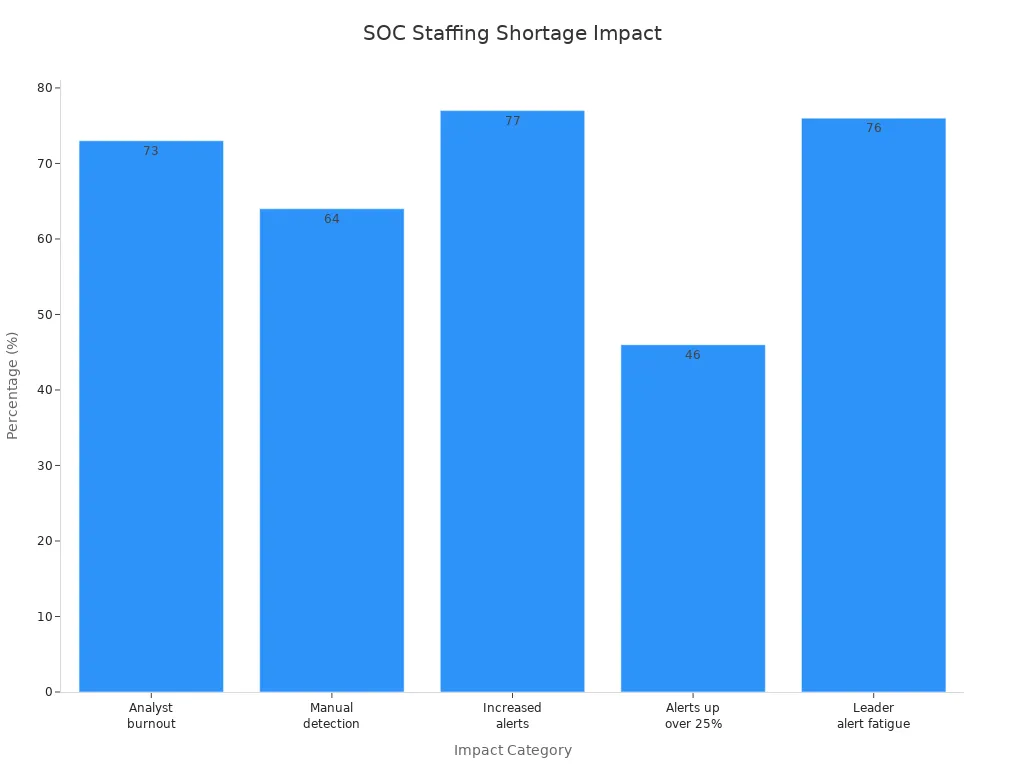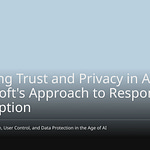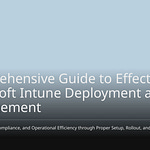In today’s digital world, keeping AI-driven Security Operations Centers (SOCs) safe is very important for organizations. About 87% of organizations use or check AI-powered SOC tools. This means the need for strong security measures is increasing. You need to deal with many challenges. These include how to secure AI agents and make sure you follow security rules.
As you work through this changing technology world, remember that security leaders must help with AI use while also managing risks well.
Key Takeaways
AI-driven SOCs improve finding threats. They use smart algorithms to look at data fast. This helps find security problems quicker.
Automation in SOCs makes response times shorter. It also cuts down costs. This lets security teams work on harder issues.
Using Data Security Posture Management (DSPM) helps find who can access sensitive data. It also enforces security rules, which lowers insider threats.
Human oversight is very important in AI-driven SOCs. Analysts need to guide AI systems and make smart choices.
Strong governance and compliance practices are key. They help manage AI risks and keep security standards high.
Traditional SOC Challenges
Resource Limitations
Traditional Security Operations Centers (SOCs) have big problems with resources. These problems make it hard for them to work well, especially when using AI technologies. You might face several issues, such as:
Talent Shortage: It is hard to find skilled workers for SOCs. Security analysts and incident responders are needed but not enough are available.
Integration and Interoperability Issues: It is important that different security tools work well together. Many SOCs have trouble with this, which can leave assets open to attacks.
Need for Flexibility and Adaptability: Old tools often cannot keep up with new threats. You need a more flexible way to stay ahead of possible attacks.
These problems can cause serious issues in operations. For example, a huge 73% of organizations say their analysts are burned out. Also, 64% still use manual detection methods. The growing number of alerts makes these problems worse. About 77% of organizations see more alerts. This situation can hurt security results.
Threat Detection Inefficiencies
Traditional SOCs also have problems with finding threats. The average time to find and respond to threats can be very long. You might notice that:
Mean Time to Detect (MTTD) shows how fast you find a security problem. A longer MTTD means there are gaps in what you can see or slow processes.
Mean Time to Respond (MTTR) measures the time from finding a threat to stopping it. A long MTTR shows that incident response needs to get better.
These delays can give attackers more time to take advantage of weaknesses. Also, traditional SOCs often have high false positive rates. You might see rates as high as 99%, which leads to alert fatigue and missing important incidents. In comparison, AI-driven systems can cut false positive alerts needing analyst review by more than 90%.
Tip: To make your SOC work better, think about using AI-driven solutions. They can help find threats faster and lessen the load on your analysts.
AI-Driven SOC Transformation
Enhanced Threat Detection
AI-driven security helps find threats better in SOCs. It uses smart algorithms to look at lots of data quickly. This means you can spot threats much faster than before. Here are some key improvements you can expect:
Two-thirds of organizations now use security AI and automation in their SOCs. This is a 10% increase from last year. With these changes, you can expect stronger protection against new threats.
SOC Automation Benefits
SOC automation is very important for making operations better. By automating regular tasks, you can lighten the load on your security team. This leads to faster response times and lower costs. Here’s how automation helps your SOC:
Automation uses technology to do important tasks in a Security Operations Center, like checking data and finding problems. This helps respond to incidents faster and cuts costs by needing less manual work.
Machine learning also helps lower false negatives in finding threats. It spots changes in normal data patterns and keeps checking network activities. This helps find unusual behavior and adjusts to new network actions, reducing false alarms. Here are some benefits of machine learning in your SOC:
It finds new and unknown attack patterns.
It provides flexible defense strategies to stay ahead of threats.
By using AI-driven SOC transformation, you can improve how you detect and respond to threats. This active approach helps keep your organization safe in a world with changing threats.
Insider Risk Management
In an AI-driven world, finding insider threats is very important. These threats can come from different places, including AI agents. These agents have a lot of power and can act on their own, often without enough supervision. This lack of control can cause problems like data theft and misuse of privileges. Also, more people are working from home or in hybrid setups, which makes security harder. Employees now use personal devices and shared networks to access company data, increasing the risk of attacks.
Data Security Posture Management
Data Security Posture Management (DSPM) is key to reducing insider threats. It helps you find who can access sensitive data, spot mistakes, enforce security rules, and watch user access. Here’s how DSPM works well:
By using DSPM, you can greatly lower the risks from insider threats.
Label-Based Governance
Label-based governance improves data safety in AI-driven SOCs. It makes sure sensitive data is found and labeled correctly. This helps with management and security. Here are some main benefits of label-based governance:
To make label-based governance work well, think about these best practices:
Create an AI bill of materials (AIBOM) for better transparency and accountability.
Set up organization-focused AI governance rules about data privacy and compliance.
Use automated security checks to watch AI models in action.
By focusing on these strategies, you can manage AI access better and keep sensitive data safe from insider threats.
Best Practices for AI-Driven Security
Governance and Compliance
Setting up strong rules and checks is very important for using AI in Security Operations Centers (SOCs). You should pay attention to some key areas to make sure everything is managed well:
Using AI Risk Management Frameworks can help you match your security practices with known standards. This proactive approach keeps your organization compliant as rules change. AI systems can automatically update compliance processes, keeping you informed about new requirements.
Importance of Human Oversight
Even though AI makes security teams better, human oversight is still very important. You must make sure that analysts guide AI systems to avoid problems. Here are some reasons why human involvement matters:
Human analysts train AI and check its decisions to meet security needs.
Without oversight, teams may trust AI too much and miss important issues.
Human judgment is key for understanding AI results and making smart choices.
Balancing automation and human help improves SOC performance. AI can take care of routine tasks like sorting alerts, letting analysts focus on tougher incidents. This teamwork combines the speed of automation with human thinking, boosting your overall security.
Tip: Regularly check AI results and involve human analysts in investigations to keep a strong security system.
By following these best practices, you can protect your AI-driven SOC well and reduce risks from automation.
In conclusion, keeping AI-driven Security Operations Centers safe is very important for today’s organizations. You deal with problems like not having enough resources and finding threats. But, AI solutions can change your SOC by improving how you find threats and automating responses.
Here are some important points to remember:
Automated threat detection makes response times faster.
Human-AI collaboration helps analysts work on tough investigations.
Predictive threat intelligence helps you expect possible attacks.
The need to use AI is clear. With 40% of alerts not being checked, you risk serious breaches. Use AI to boost your security and make sure your organization stays strong against changing threats. 🌐
FAQ
What is an AI-driven Security Operations Center (SOC)?
An AI-driven SOC uses artificial intelligence to make security better. It helps find threats faster, improves response times, and lowers false alarms. This technology helps security teams manage risks more easily.
How can I reduce insider threats in my SOC?
To lower insider threats, use Data Security Posture Management (DSPM). Keep an eye on user access, enforce security rules, and label sensitive data. Regular checks and training for employees also help reduce risks.
Why is human oversight important in AI-driven SOCs?
Human oversight makes sure that analysts guide AI systems. Analysts can understand AI results, make smart choices, and avoid relying too much on technology. This balance improves overall security.
What are the benefits of SOC automation?
SOC automation makes operations smoother by taking care of regular tasks. It speeds up response times, cuts costs, and reduces human mistakes. Automation lets analysts focus on more complicated incidents.
How can I ensure compliance in my AI-driven SOC?
Set up strong governance rules. Follow industry standards like NIST AI RMF and ISO 42001. Regularly check compliance processes and update them as rules change to stay compliant.


















